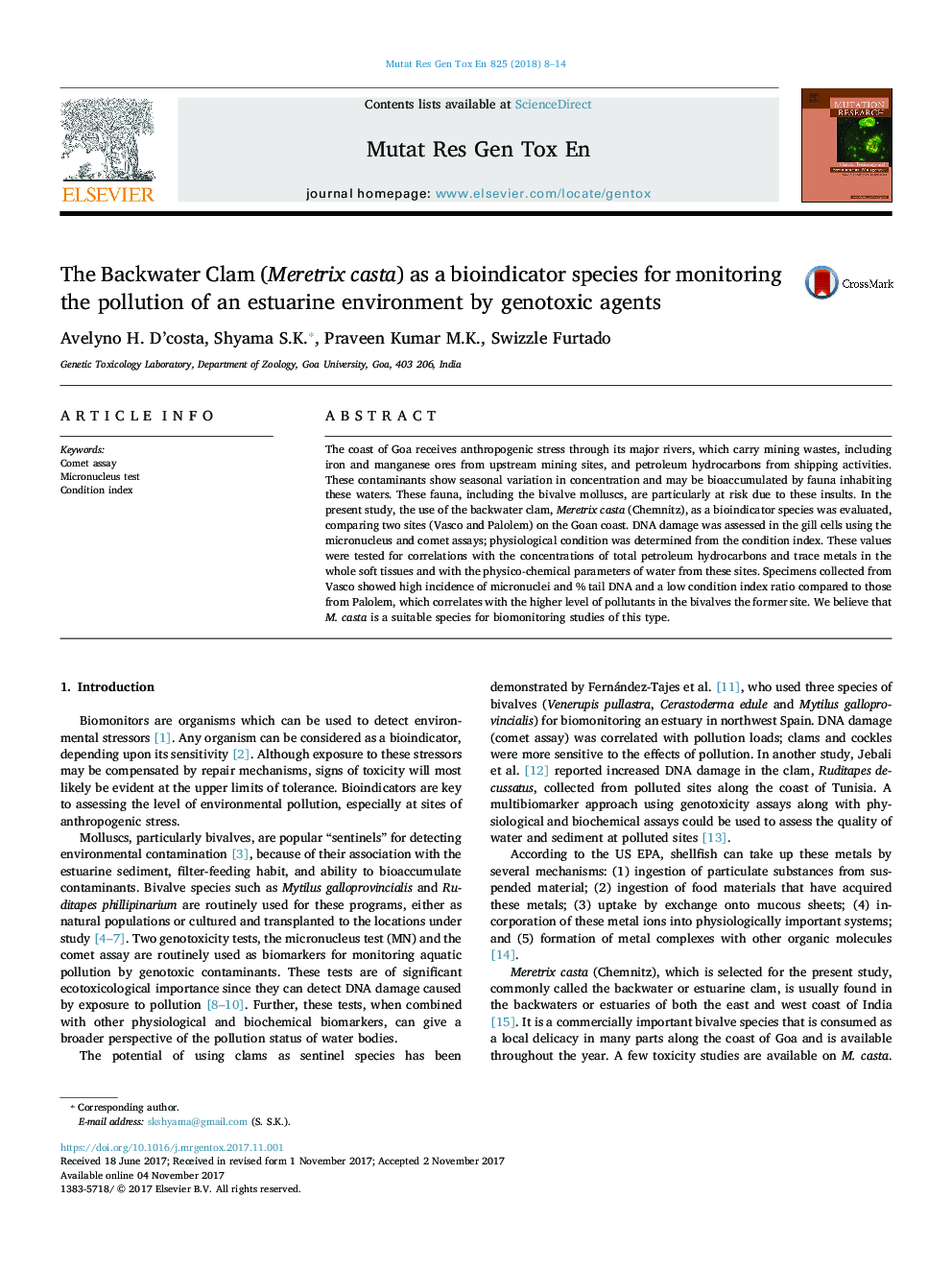| Article ID | Journal | Published Year | Pages | File Type |
|---|---|---|---|---|
| 8456238 | Mutation Research/Genetic Toxicology and Environmental Mutagenesis | 2018 | 7 Pages |
Abstract
The coast of Goa receives anthropogenic stress through its major rivers, which carry mining wastes, including iron and manganese ores from upstream mining sites, and petroleum hydrocarbons from shipping activities. These contaminants show seasonal variation in concentration and may be bioaccumulated by fauna inhabiting these waters. These fauna, including the bivalve molluscs, are particularly at risk due to these insults. In the present study, the use of the backwater clam, Meretrix casta (Chemnitz), as a bioindicator species was evaluated, comparing two sites (Vasco and Palolem) on the Goan coast. DNA damage was assessed in the gill cells using the micronucleus and comet assays; physiological condition was determined from the condition index. These values were tested for correlations with the concentrations of total petroleum hydrocarbons and trace metals in the whole soft tissues and with the physico-chemical parameters of water from these sites. Specimens collected from Vasco showed high incidence of micronuclei and % tail DNA and a low condition index ratio compared to those from Palolem, which correlates with the higher level of pollutants in the bivalves the former site. We believe that M. casta is a suitable species for biomonitoring studies of this type.
Related Topics
Life Sciences
Biochemistry, Genetics and Molecular Biology
Cancer Research
Authors
Avelyno H. D'costa, Shyama S.K., Praveen Kumar M.K., Swizzle Furtado,
